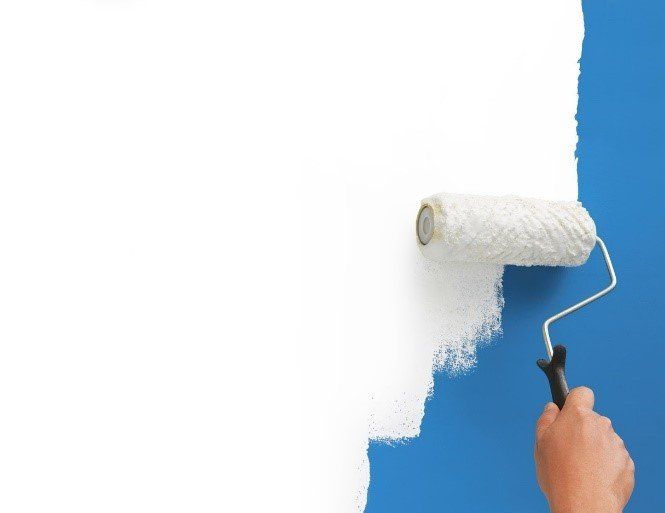
Painting over wallpaper is a dicey game. Sometimes it yields acceptable results; other times it doesn't. When to remove wallpaper and when to leave it in place can be hard to gauge. Here's what you need to know.
Why Remove Wallpaper?
In general, it's better to remove wallpaper than it is to leave it in place. Wallpaper can make a variety of problems under paint, and by removing the wallpaper, you can skirt those problems.
For example, water from paint can saturate the paper, especially if the paint is latex. When the wallpaper gets wet, the adhesive that holds the wallpaper in place could fail and the paper may bulge or peel off the wall. If the wall becomes saturated because of a roof leak or a pipe leak, the same problem could occur.
In addition, the texture of the wallpaper, including any seams between wallpaper rolls, will be visible through the paint. Sometimes this is more noticeable than others, depending on the glossiness of the paint (glossy paint shows imperfections more easily than matte) and the degree of texture on the wallpaper.
Finally, once the wallpaper has been painted over, removing wallpaper becomes even harder, messier and more complicated to do. For all these reasons, removing wallpaper is usually best.
When to Remove Wallpaper? When to Leave It On?
Remove wallpaper unless you know of a specific reason to leave it on. For example, you may be aware that the walls were not properly primed when the wallpaper was applied or that the wallpaper was applied over many other layers of wallpaper.
If either of these things is true, leave the wallpaper up. Taking down multiple layers of very old wallpaper could result in damage to the walls. In addition, if primer was not applied to the walls, this could cause parts of the wall to be removed with the wallpaper.
What Should You Do to Remove Wallpaper?
To remove wallpaper, purchase a solution of wallpaper remover from a home improvement center or a hardware store. Soak the wallpaper with the solution and use a scraper or a broad knife to scrape the paper off the wall. You may need to apply the solution to the paper several times.
If the remover doesn't work, run a scoring tool over the wallpaper using a circular motion. Be careful to avoid puncturing the drywall with the scoring tool. If you do puncture the drywall with the scoring tool, you'll need to fill in any holes that you make with a spackling compound.
Spray the scored paper with the solution so that the solution soaks into the holes made by the scoring tool. Give the wallpaper a little time to absorb the solution, and then use the scraper again. Repeat this process until you’ve fully removed the wallpaper.
How Do You Paint Over Wallpaper?
Caulk the top and bottom edge of the wallpaper to prevent the wallpaper from peeling after it is painted. Next, apply a layer of oil-based primer over the wallpaper. This primer will help protect the wallpaper from the moisture in the paint.
Follow the instructions for application and pay close attention to drying time. Oil-based paints take hours to dry, versus latex paint, which dries in about an hour. Paint the walls after giving the primer sufficient time to dry.
Of course, the easiest thing you can do to paint wallpapered walls is to hire a professional. You'll never need to worry about best methods to remove the paper and other concerns if you hire a contractor. For more information about painting over wallpaper, contact Albrecht and Son LLC . We'll be happy to answer your questions.





